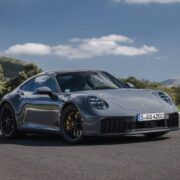SMALL CAN BE MORE
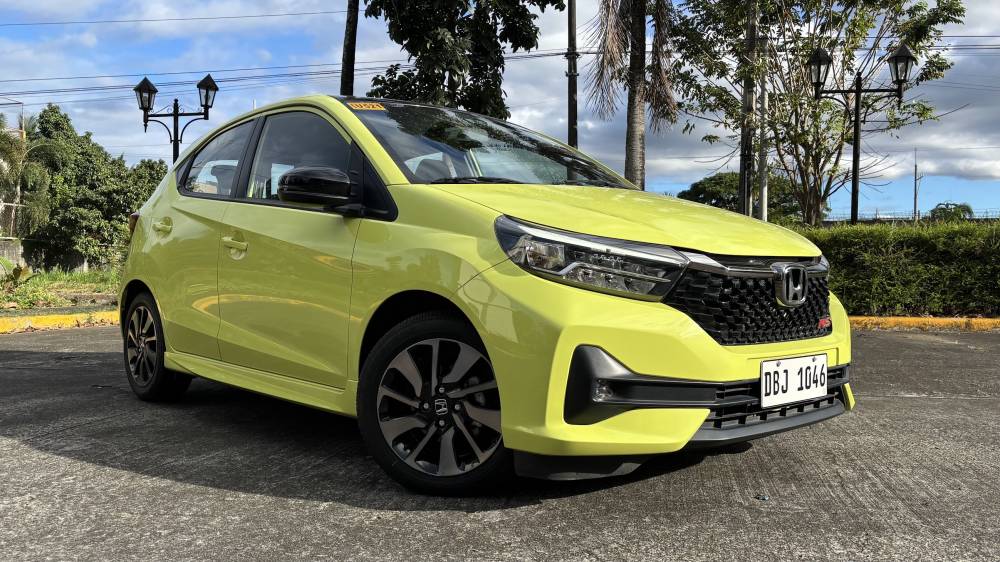
For some people, size really does matter.
That’s because size has become a means of projecting power. Indeed, warfare has long been a battleground of not just cunning and strategy, but also of ever smarter and larger technologies for destruction.
Literature is likewise filled with examples of the power of size. The Biblical story of the young shepherd David slaying the gargantuan Goliath is a tale of how faith in God can help overcome immense adversity, while filmmakers use the “bird’s eye view” to emphasize how diminutive and seemingly powerless a protagonist is.
And then there’s neoliberal capitalism, which offers fertile ground for the growth of immense wealth (albeit, to a select few). Such an economic system can only survive by appealing to consumers’ desire for more, more, more.
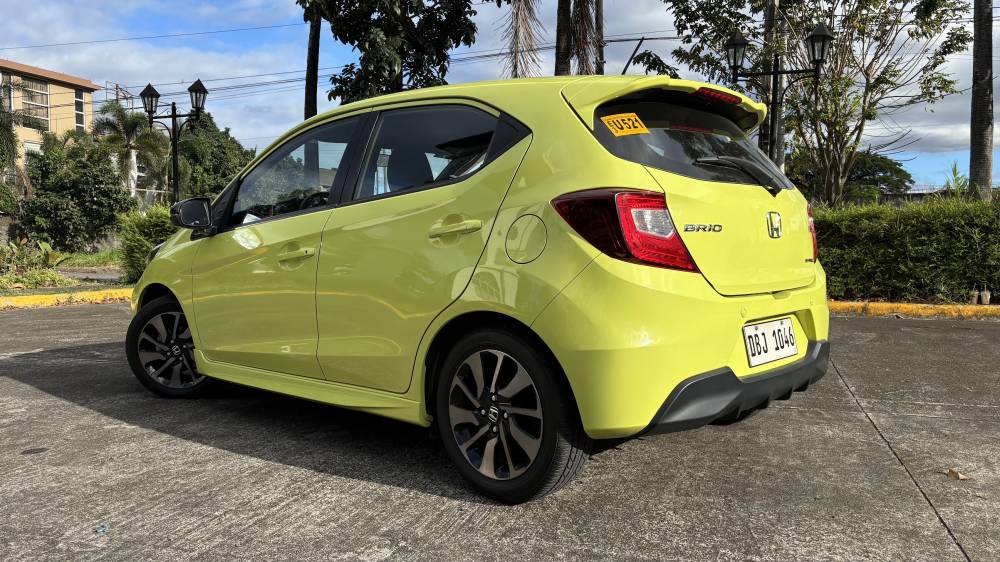
A mansion is a statement of not only wealth, but also power – I can afford to have plenty of land, a highly prized currency of capitalism, as well as the numerous fine materials to create it and the staff to run it. And what big house would be complete without a big car that extends the trappings of a fine home out on the road?
So, where on Earth does the little 2025 Honda Brio RS Black Top fit in such a worldview? The answer will surprise you.
Handsome looks
While most small hatchbacks try too hard to look like anime characters, this top-spec Brio has a more restrained approach.
I positively adore the eye-popping Electric Lime Metallic paintjob, while the black roof compliments the black front grill and side mirrors. Meanwhile, the large LED headlights and foglights offer good visibility in dark conditions.
The standard bodykit does spruce up the rather featureless side and rear profiles. Things like body-colored side skirts and tailgate spoiler provide a somewhat sporty flavor, while the 15-inch alloy wheels with 185/55 series tires suit the package well.
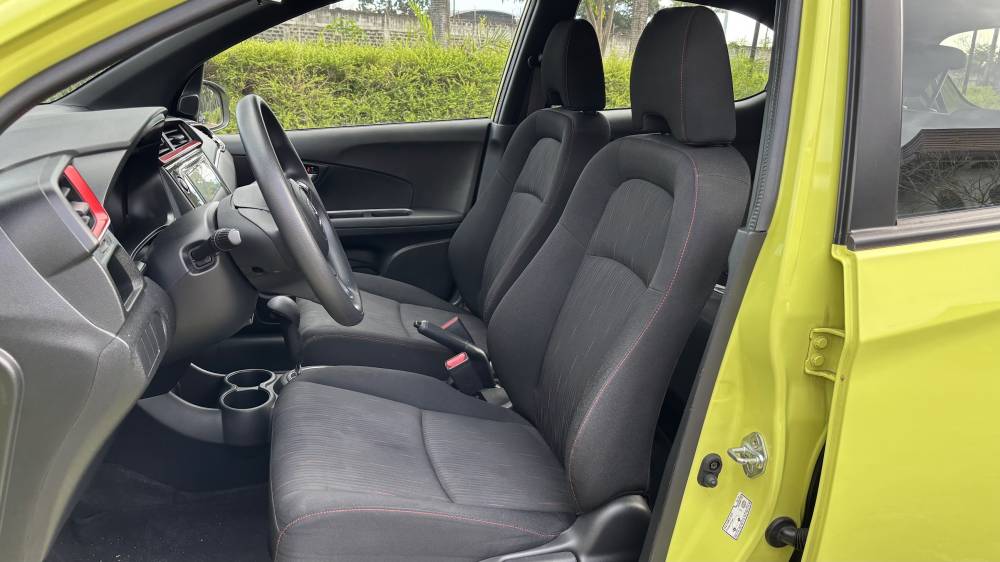
Overall, it looks quite tasteful compared to rival hatchbacks, although those who want more flair may eye cars like the BYD Seagull electric vehicle (EV).
Roomy cabin
Inside, the Brio RS Black Top seems to have been inspired by Mary Poppins’ handbag by offering legitimate room for five people.
While most other small hatchbacks would require the middle passenger in the rear seat to become a piece of origami, he or she will not have to suffer such creative indignity in this Honda (although he or she only gets a two-point lap belt). It even has more space than my larger BMW 3 Series, which has the sort of brand cache that is highly prized among capitalists.
However, the rest of the cabin does symbolize which end of the car market this Brio RS Black Top lies – the red accents on the dashboard may look fun, but the sea of hard and scratchy plastics are unusual for a car that costs this much. And features like leather upholstery and a push-start button, standard in the Seagull, would better justify the Honda’s price.
But unlike the BYD, the controls for the very strong air-conditioner and 7-inch touchscreen infotainment system with Apple CarPlay and Android Auto are splendidly easy to use. However, the latter is an aftermarket unit that has a fairly fuzzy screen.
The Brio RS Black Top offers a reasonable 258 liters of cargo space with the rear seats up and 851 liters when folded, but you get a rather high loading sill. I would also have liked the clever arrangement in more expensive Hondas, especially since the rear bench neither splits nor folds flat.
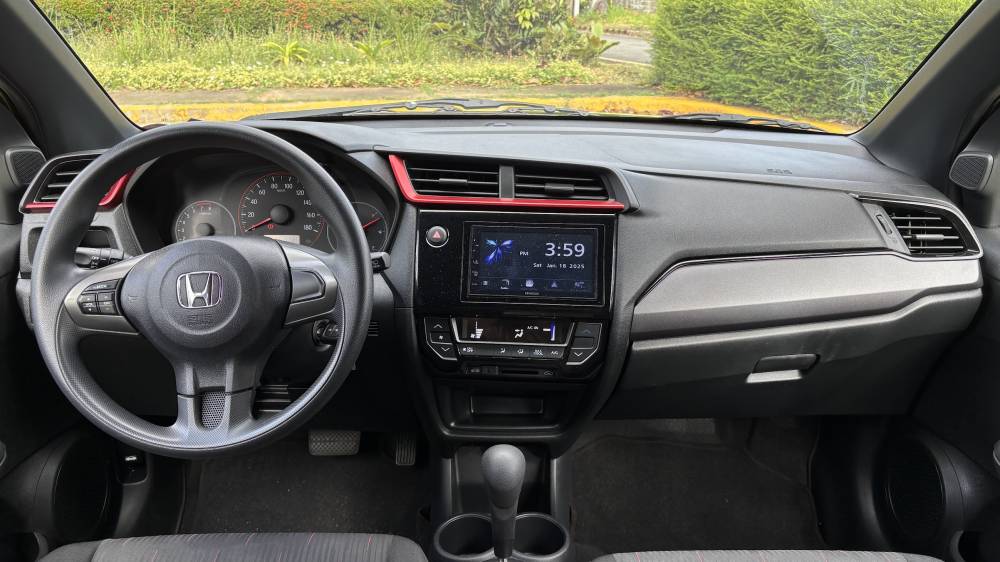
One last thing that I would have loved to see is the excellent Honda SENSING active-safety suite standard across all Brio variants. Given that Honda Cars Philippines Inc. has taken the lead in technology like this, it would be great for it to beat the competition again with this life-saving system, especially in high-volume segments like small hatchbacks.
Superb fuel economy
Where the Brio RS Black Top really sets itself apart from its equally petite rivals is the driving experience.
The latest Toyota Wigo offers a good ride thanks to a much stiffer chassis than before, but it is saddled by its anemic 1.0-liter inline-3 gasoline engine. Meanwhile, the Mitsubishi Mirage has a peppier 1.2-liter inline-3, but the wobbly bodyshell and coarse powertrain expose a platform that is turning 13 this year.
The little Honda trounces them with its 1.2-liter, single-cam, 16-valve inline-4 gasoline engine producing a class-leading 89 horsepower and 110 Newton-meters of torque, coursed through a continuously variable transmission. Performance below 4,000 rpm is stellar, although a second camshaft would greatly aid the lackluster (and raucous) acceleration at full throttle.
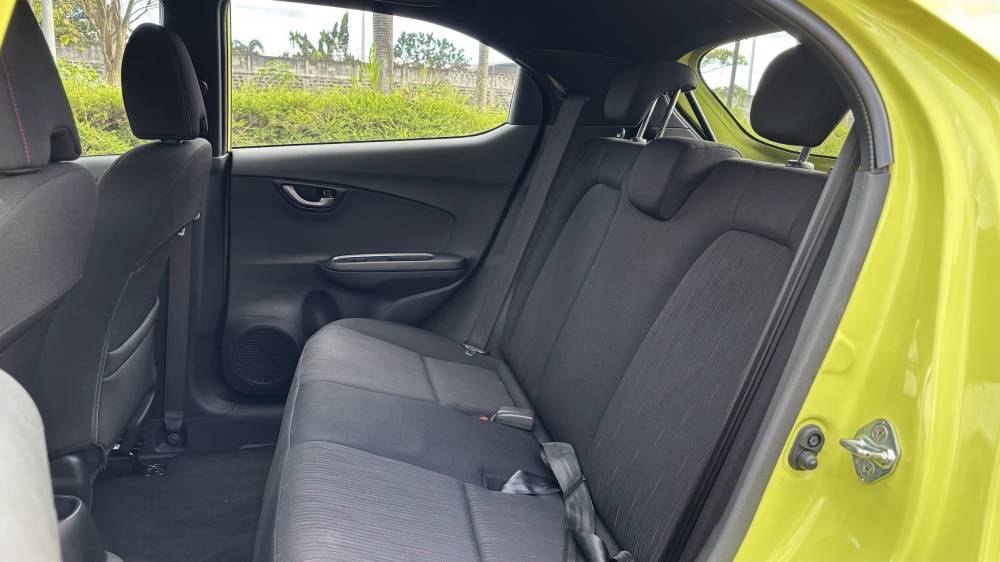
Nonetheless, all occupants are rewarded with fairly supportive seats and firm suspension that gives a composed ride and perky handling. Drivers may not like the lack of seat-height and steering-reach adjustments, but they will enjoy the light and responsive steering that could do with more feel.
Braking action is strong, but the pedal has very poor feel, so brake modulation can be tricky thanks to the rather deep bite point. By contrast, the fuel consumption is exceptional – 14 to 17 kilometers per liter in the city and 21 to 24 kilometers per liter on the expressway.
Redefining more
The Honda Brio RS Black Top is unquestionably the best small hatchback on sale as of press time, although a bevy of improvements in safety and handling would greatly extend its lead.
But this all comes at a price – at P863,000, it costs considerably more than the top-spec Wigo and Mirage, while being a touch cheaper than the more technologically advanced Seagull. I would rather get the P735,000 Brio S with its slick 5-speed manual or the P827,000 Brio V that is also available in Electric Lime Metallic.
But what the Brio RS Black Top proves is that you can have big-car space and road manners in a petite and fuel-efficient package. It’s arguably for people who want to downsize without too much compromise or are so comfortable in their own skin that projecting power through road-going leviathans is wholly unnecessary.
Bigger isn’t always better, as they say.













